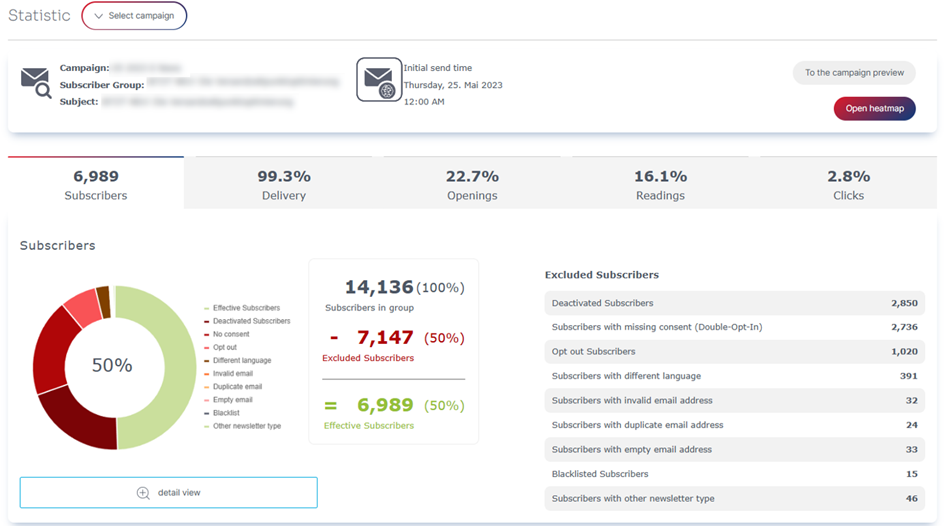[EN] Send time optimization
Let AI decide when the optimal sending time is
The sending time of an email plays a major role in achieving a high number of responses. With the help of send time optimization, the time for sending a campaign is determined individually for each subscriber. The response behaviour and weekly activities of the subscribers are taken into account and conclusions are drawn.
Not only do the days of the week influence the campaign responses (openings, clicks, etc.) of a newsletter, but the weather and other factors can also play a role. The optimal time for a company email address may also be completely different from that for a subscriber’s private email address.
In this whitepaper, we show you how you can achieve more openings, clicks and thus more success in your email campaigns by optimising the sending time.
How do I activate send time optimization?
There are three different statuses in the eworx Marketing Suite for send time optimization, which the artificial intelligence can have per client.
Not activated:
If your user has the right to do so, send time optimization can be activated in the eworx Marketing Suite dashboard.

Send time optimization learns
Once send time optimization has been activated, the artificial intelligence is in the learning process and cannot yet be used.
How long it takes for intelligent send time optimization to learn depends on the number of subscribers and the number of responses to campaigns sent so far. You can see the learning progress on the bar.

Send time optimization is already available for shipping
The eworx Marketing Suite dashboard shows at a glance whether artificial intelligence is ready for shipping.

How can I activate send time optimization for shipping?
Once send time optimization has been activated in the eworx Marketing Suite dashboard and is ready for shipping, the function can be activated in the email campaign so that your subscribers receive the emails at the optimal delivery time.
When editing a campaign, you can activate the function under “Send option”:

Once your campaign has been created as desired, a subscriber group has been specified and the review has been carried out, you can configure the dispatch. You can choose whether the campaign should be sent now or later.
If you select to send the campaign now, it will be sent to your subscribers within 24 hours based on the send time optimization.
However, you can also set the campaign to be sent later. To do this, enter the desired date from which the campaign should be sent to your subscribers using send time optimization.

With default values, send time optimization is always deactivated. This means that if a campaign is adopted as a default value and send time optimization is activated, you must select send time optimization again when creating a new campaign with default values.
For more information on default values, see the following whitepaper.
Resends are always sent without send time optimization. They are sent immediately as soon as you finally send the campaign to the desired subscriber.
Is there an optimal send time for all subscribers?
Subscribers who have not responded, such as newly created subscribers, do not yet have an optimal send time. The send time for such subscribers is calculated based on the remaining subscribers in the subscriber group.
When checking the campaign, the system checks whether delivery at an optimal sending time is possible for all subscribers in the subscriber group to whom the newsletter is sent.

If a subscriber group is specified for the campaign that only contains subscribers who have been newly created (e.g. via import) and have not yet received a campaign, no subscriber in the subscriber group will have an optimal send time. This means that no optimal send time can be calculated for the rest of the subscriber group.
How can I evaluate the results of send time optimization in the statistics?
In the statistics and, above all, in the 24-hour analysis, you can see whether the campaign was sent using send time optimization.
Firstly, you will find the symbol for send time optimization in the campaign data. Furthermore, a difference in the sent emails is visible (in colour) in the 24-hour analysis.

All other key figures can be read as usual. You can find out how to interpret the statistics in the following whitepaper.
Updated 8 days ago
